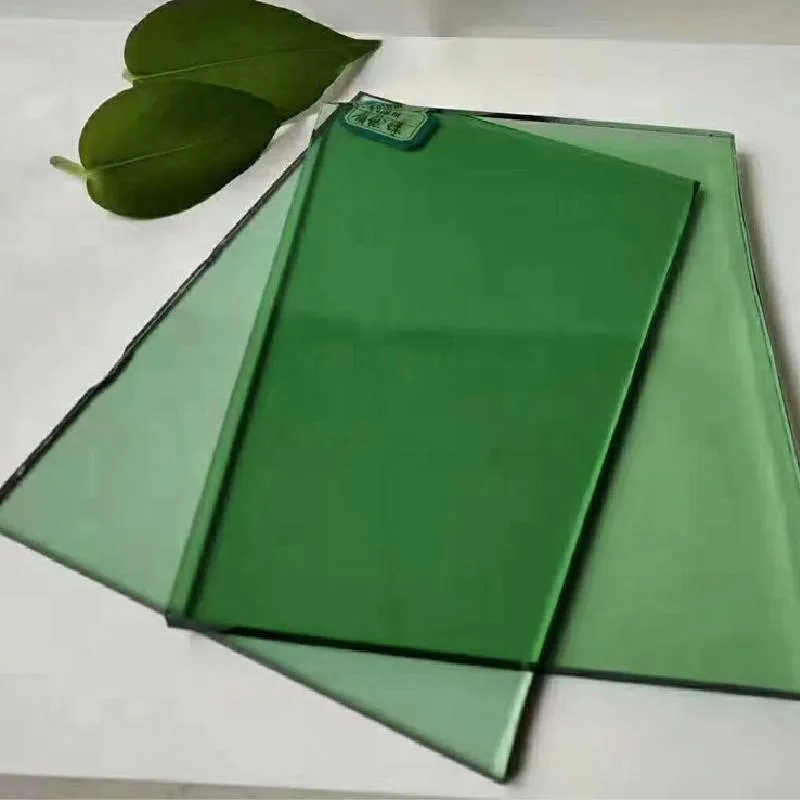The Versatility and Benefits of Diamond Tempered Glass
Diamond tempered glass, a remarkable advancement in glass technology, has made significant strides in various industries. Known for its exceptional strength and durability, diamond tempered glass undergoes a specialized manufacturing process that enhances its physical properties, making it an ideal choice for numerous applications.
At its core, diamond tempered glass is made from standard glass that has been subjected to a rigorous process of heating and rapid cooling. This thermal treatment creates a rigid structure, significantly increasing the glass's resistance to impact and thermal stress. As a result, it is not only tougher than regular glass but also shatter-resistant, making it a preferred option for both commercial and residential settings.
One of the standout qualities of diamond tempered glass is its clarity and optical performance. It boasts high light transmittance, allowing for maximum visibility without distortion. This characteristic makes it an excellent material for display cases, storefronts, and glass facades, where aesthetics and safety go hand in hand. The glass’s ability to withstand extreme temperatures without compromising its structural integrity ensures that it can be used in environments where conventional glass would fail.
diamond tempered glass
In addition to its strength and clarity, diamond tempered glass also offers substantial energy efficiency. With the increasing emphasis on sustainable building practices, this type of glass plays a pivotal role in reducing energy consumption. It can be treated with low-emissivity (Low-E) coatings, which reflect infrared light while allowing visible light to pass through. This feature helps maintain indoor temperatures, reducing the need for heating and cooling, and ultimately leading to lower energy bills.
The safety features of diamond tempered glass are further enhanced by its breakage characteristics. Upon impact, instead of shattering into large, jagged shards like regular glass, it breaks into small, blunt pieces that minimize the risk of injury. This makes it a safer option for environments frequented by children or in high-traffic areas. Consequently, many building codes require the use of tempered glass in doors, windows, and other applications where safety is paramount.
Moreover, diamond tempered glass is widely used in the automotive industry for windshields and side windows. Its robust nature helps vehicles withstand collisions and protects occupants from flying debris during an accident. Additionally, the integration of diamond tempered glass into construction projects contributes to overall building longevity and reduces maintenance costs over time.
In conclusion, diamond tempered glass is a multifaceted material that epitomizes strength, safety, and energy efficiency. Its unique properties make it suitable for a wide range of applications, spanning from architecture to automotive design. As demand for high-performance materials continues to rise, diamond tempered glass remains at the forefront, promising innovations and advancements that align with modern safety and sustainability standards. Whether for residential use or large-scale industrial projects, investing in diamond tempered glass is a decision that combines functionality with aesthetic appeal, ensuring a durable and elegant solution for a myriad of needs.
 Afrikaans
Afrikaans  Albanian
Albanian  Amharic
Amharic  Arabic
Arabic  Armenian
Armenian  Azerbaijani
Azerbaijani  Basque
Basque  Belarusian
Belarusian  Bengali
Bengali  Bosnian
Bosnian  Bulgarian
Bulgarian  Catalan
Catalan  Cebuano
Cebuano  Corsican
Corsican  Croatian
Croatian  Czech
Czech  Danish
Danish  Dutch
Dutch  English
English  Esperanto
Esperanto  Estonian
Estonian  Finnish
Finnish  French
French  Frisian
Frisian  Galician
Galician  Georgian
Georgian  German
German  Greek
Greek  Gujarati
Gujarati  Haitian Creole
Haitian Creole  hausa
hausa  hawaiian
hawaiian  Hebrew
Hebrew  Hindi
Hindi  Miao
Miao  Hungarian
Hungarian  Icelandic
Icelandic  igbo
igbo  Indonesian
Indonesian  irish
irish  Italian
Italian  Japanese
Japanese  Javanese
Javanese  Kannada
Kannada  kazakh
kazakh  Khmer
Khmer  Rwandese
Rwandese  Korean
Korean  Kurdish
Kurdish  Kyrgyz
Kyrgyz  Lao
Lao  Latin
Latin  Latvian
Latvian  Lithuanian
Lithuanian  Luxembourgish
Luxembourgish  Macedonian
Macedonian  Malgashi
Malgashi  Malay
Malay  Malayalam
Malayalam  Maltese
Maltese  Maori
Maori  Marathi
Marathi  Mongolian
Mongolian  Myanmar
Myanmar  Nepali
Nepali  Norwegian
Norwegian  Norwegian
Norwegian  Occitan
Occitan  Pashto
Pashto  Persian
Persian  Polish
Polish  Portuguese
Portuguese  Punjabi
Punjabi  Romanian
Romanian  Russian
Russian  Samoan
Samoan  Scottish Gaelic
Scottish Gaelic  Serbian
Serbian  Sesotho
Sesotho  Shona
Shona  Sindhi
Sindhi  Sinhala
Sinhala  Slovak
Slovak  Slovenian
Slovenian  Somali
Somali  Spanish
Spanish  Sundanese
Sundanese  Swahili
Swahili  Swedish
Swedish  Tagalog
Tagalog  Tajik
Tajik  Tamil
Tamil  Tatar
Tatar  Telugu
Telugu  Thai
Thai  Turkish
Turkish  Turkmen
Turkmen  Ukrainian
Ukrainian  Urdu
Urdu  Uighur
Uighur  Uzbek
Uzbek  Vietnamese
Vietnamese  Welsh
Welsh  Bantu
Bantu  Yiddish
Yiddish  Yoruba
Yoruba  Zulu
Zulu 

